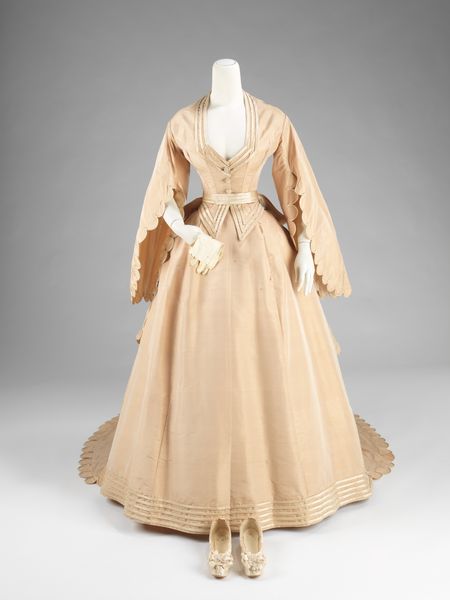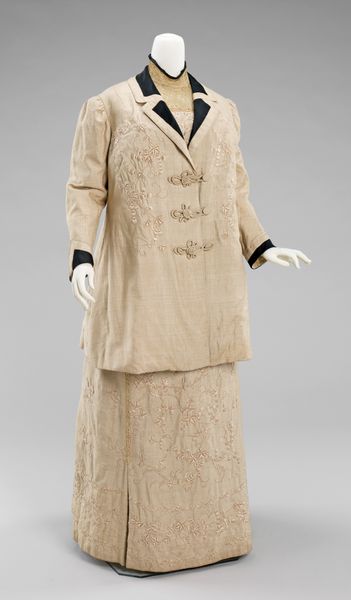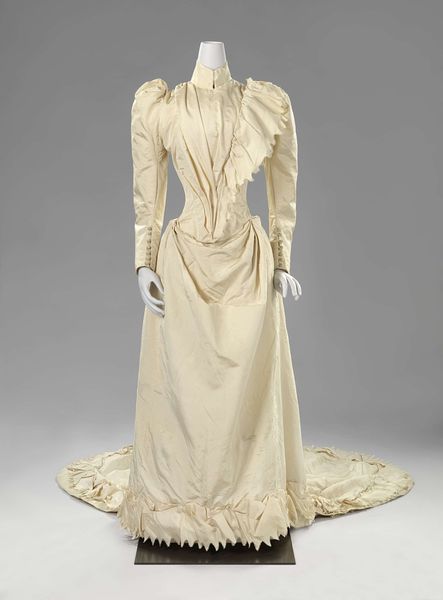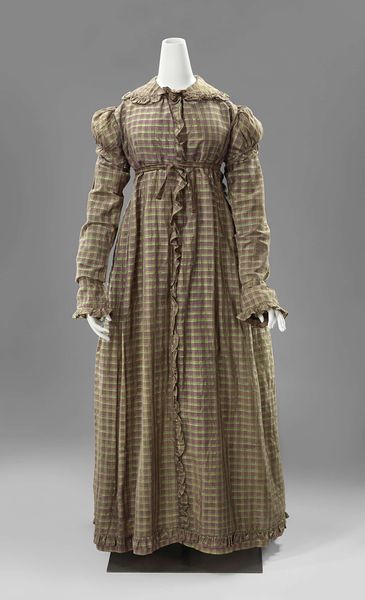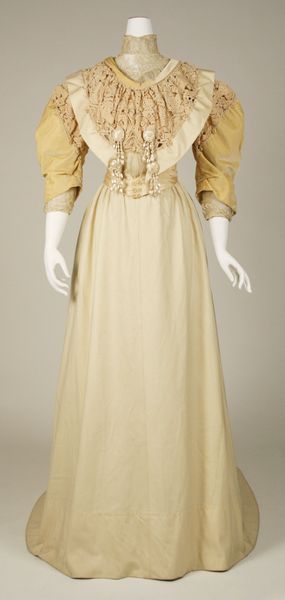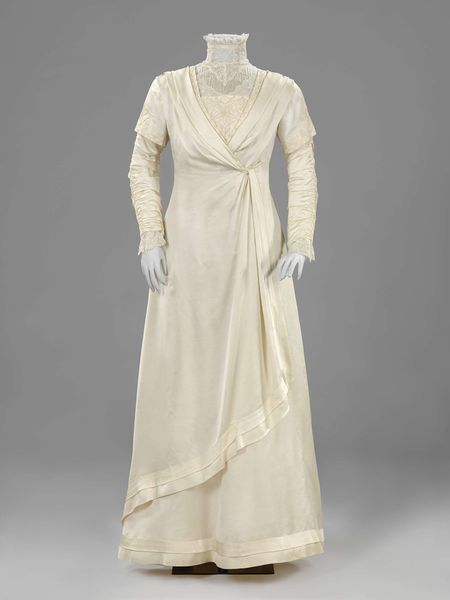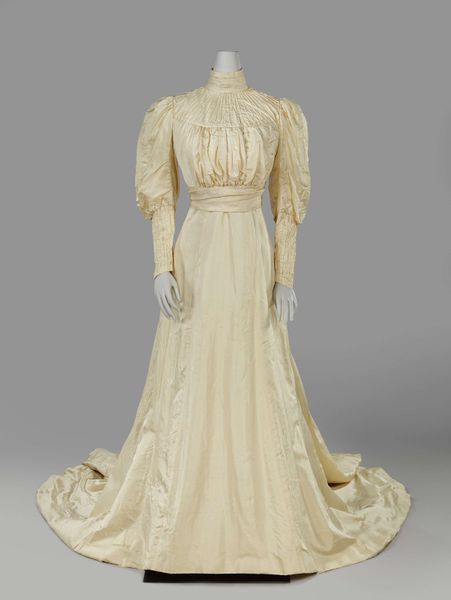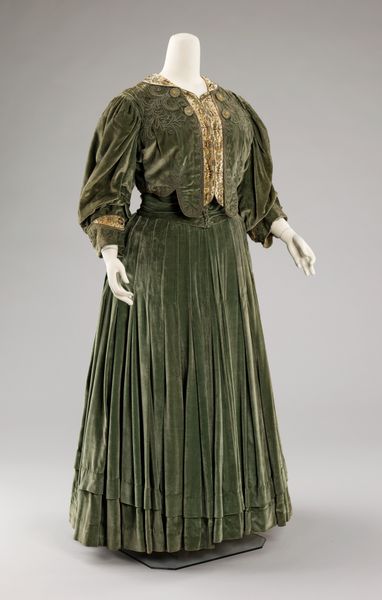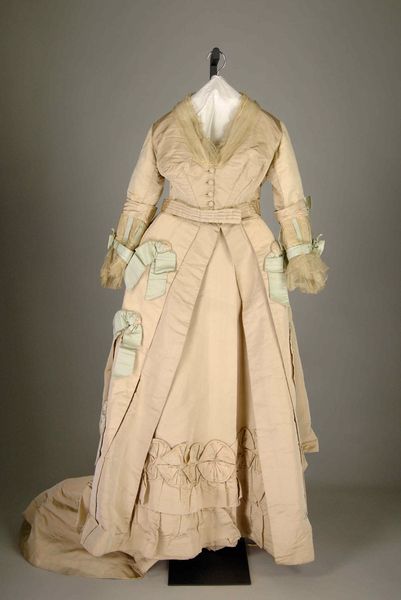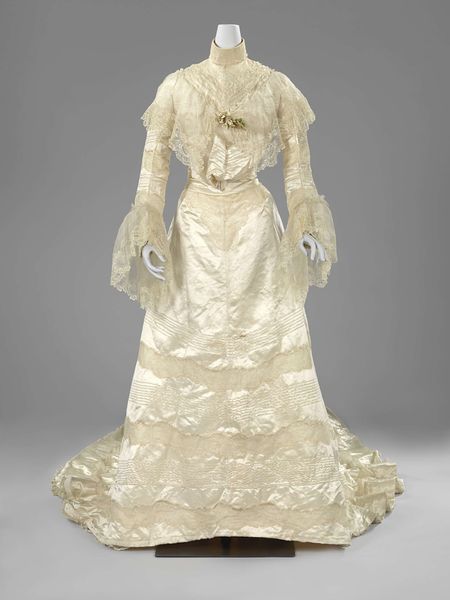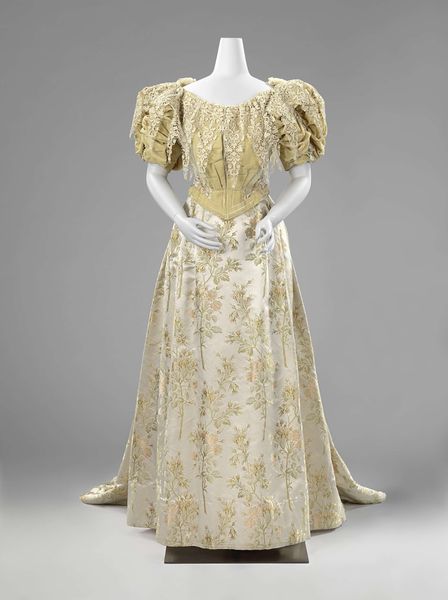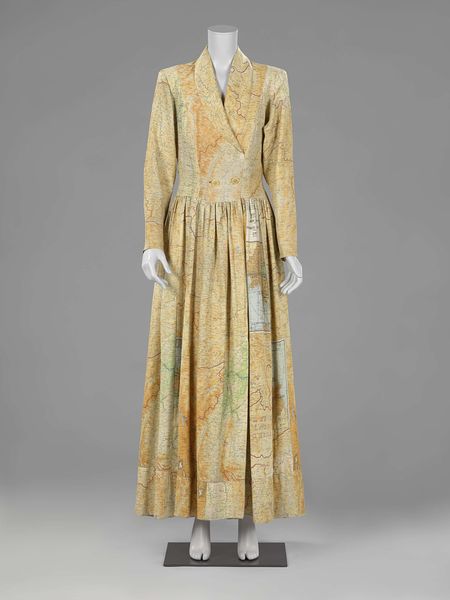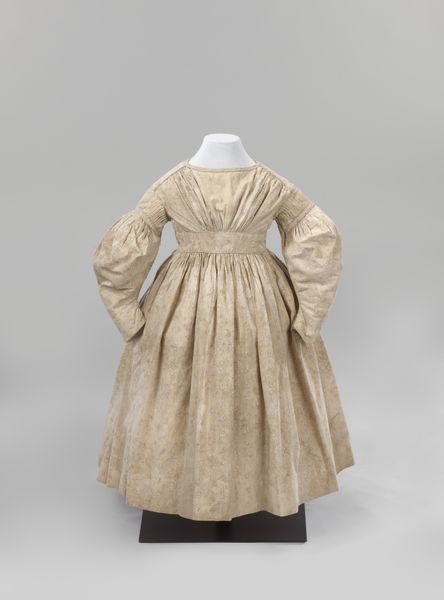
#
fashion design
#
underwear fashion design
#
fashion mockup
#
fashion and textile design
#
historical fashion
#
wearable design
#
clothing photo
#
fashion sketch
#
clothing design
#
bridal fashion
Dimensions: length 127 cm, waist 64 cm, length 45 cm, width 65 cm
Copyright: Rijks Museum: Open Domain
Curator: Looking at this piece, I’m struck by its almost ethereal quality, a sense of lightness. Is this garment made of linen? Editor: This is the "Japon met schootblouse," created circa 1916-1917 by G. Bolsman-Huizinga. It represents, I believe, a significant moment in early 20th-century design, reflecting shifts in the representation of the feminine. The use of light, airy fabrics like linen contributed to new cultural perceptions of a woman’s independence, an embrace of lightness in contrast to more traditionally corseted silhouettes. Curator: I see what you mean; you're definitely spot-on with the change from corseted wear! Although airy, it seems rather impractical, even restrictive in its own way, not entirely shaking off some sense of older-fashioned dress silhouettes? It feels caught between eras, clinging to decorative traditions while gesturing at modernity. Editor: Absolutely, its placement in time—right between those late Victorian strictures and a burgeoning modernity—is crucial! Notice the decorative embroidery on the top; also, that dropped, or even ‘false skirt’ section? We might consider this design as negotiating constraints—how can feminine identity be redefined, while still being subjected to many other considerations of propriety and access? It is more than just a piece of clothing; it serves as an artefact through which to examine societal narratives that impact identity. Curator: I concur, viewing it from the position of these transitions helps. Thinking of those narratives that influenced this designer at the time... Considering her vantage point at that moment reveals just how cleverly she seemed to explore those nuances through structure and ornament. The floral embroidery on the front and the cut of sleeves is something like visual dialogue with societal conventions. The whole design reads like an expression about freedom but filtered and nuanced. Editor: Exactly! Its beauty lies not just in its aesthetic appeal but in what it communicates about that very specific historical moment. A time when identities shifted, were challenged, negotiated—making fashion designs like these highly eloquent socio-cultural artifacts. Curator: Fascinating to consider its complexities in terms of how design encapsulates socio-cultural nuances from those transformative years, providing layers for conversations to occur from various points of views on how societal narratives are so important when making fashion analyses.
Comments
No comments
Be the first to comment and join the conversation on the ultimate creative platform.

